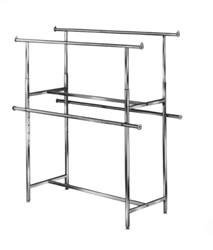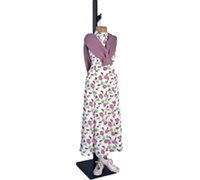So you’ve decided you need a merchandising plan – now what? It might seem overwhelming, especially if you don’t have a lot of experience in this area. Fortunately, organizing your store to feature your merchandise and boost your sales is not nearly as hard as you might think. Just remember a few key tips and you’ll be well on your way to growing your profits:

- Determine your needs and goals first – Your merchandising must be specific to your business. Consider the amount of space you have, the kind of products you offer, and what your sales priorities are. Do you have a particular item that isn’t selling well? Are you trying to increase sales per customer? Figuring out your concerns will help you develop a plan to effectively address them.
- Make the merchandise the star of the show – Everything in your space should highlight, complement, and draw attention to your product. From the color of your walls to the style of your fixtures and décor, make sure everything helps to make the merchandise the focal point.
- Maximize on your space – Anywhere your customer can see is an opportunity to display your merchandise. Take advantage of wall space, flat surfaces like tables (preferably with shelves underneath for even more visible product), and make the most of your floor space with display fixtures of varying heights and styles.
- Create distinct merchandise zones – Customers will have a difficult time navigating your space if it is a jumbled mass of merchandise. Avoid this by grouping similar items together: a cluster of items with a common theme, a display that shows how certain products can work well with other products, pieces that are specific to a particular use, etc.
- Use signage purposefully – Bright, well placed signs are important; they draw shoppers’ attention, inform them of significant details (like sale prices or new products), and direct them effectively through the store. Make sure all signage is accurate and updated (correct prices, product labels, etc) and limited to essential information. Too many signs can be visually distracting and can pull focus from your product.
- Take advantage of point-of-sale opportunities – One of your best opportunities to add to a sale is at the register. The customer is already committed to making a purchase, is rooted at the register stand for at least a few minutes, and expects a face-to-face encounter with store personnel. It’s the perfect place to display small, low-cost “impulse” items that will help to boost your per-customer sales.
- Maintain a neat, organized sales floor – Your merchandising plan is only effective if it, and your space, is clean and well maintained. Customers do not want to stay in, or return to, a dirty shop: soiled floors, dust, fingerprints and grime on windows or mirrors could cost you sales. Keeping your merchandise well organized is important too; make sure products are in the correct places, neatly positioned (folded, stacked, hung, etc.), and in good repair.

This article was contributed by the experts at Store Fixture Shop.

